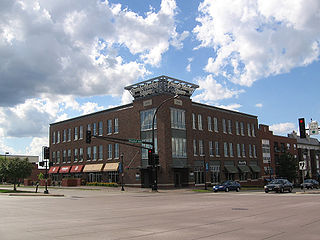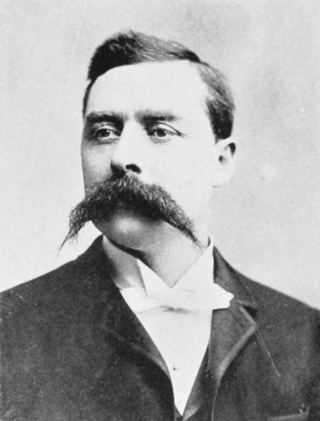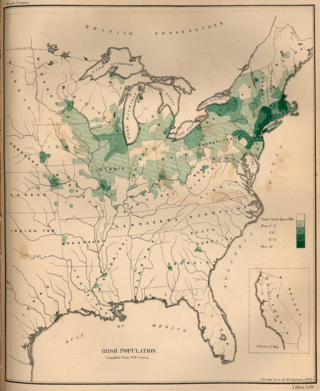Related Research Articles

Saint Paul is the capital of the U.S. state of Minnesota and the county seat of Ramsey County. Situated on high bluffs overlooking a bend in the Mississippi River, Saint Paul is a regional business hub and the center of Minnesota's government. The Minnesota State Capitol and the state government offices all sit on a hill close to the city's downtown district. One of the oldest cities in Minnesota, Saint Paul has several historic neighborhoods and landmarks, such as the Summit Avenue Neighborhood, the James J. Hill House, and the Cathedral of Saint Paul. Like the adjacent city of Minneapolis, Saint Paul is known for its cold, snowy winters and humid summers.

Burnsville is a city 15 miles (24 km) south of downtown Minneapolis in Dakota County, Minnesota. The city is situated on a bluff overlooking the south bank of the Minnesota River, upstream from its confluence with the Mississippi River. Burnsville and nearby suburbs form the southern portion of Minneapolis–Saint Paul, the 16th-largest metropolitan area in the United States, with about 3.7 million residents. At the 2020 census the population was 64,317.

Inver Grove Heights is a city in Dakota County, Minnesota, United States. The population was 35,801 at the 2020 census. The city was formed on March 9, 1965, with the merger of the village of Inver Grove and Inver Grove Township.

John Ireland was an American religious leader who was the third Roman Catholic bishop and first Roman Catholic archbishop of Saint Paul, Minnesota (1888–1918). He became both a religious as well as civic leader in Saint Paul during the turn of the 20th century. Ireland was known for his progressive stance on education, immigration and relations between church and state, as well as his opposition to saloons and political corruption. He promoted the Americanization of Catholicism, especially in the furtherance of progressive social ideals. He was a leader of the modernizing element in the Roman Catholic Church during the Progressive Era. He created or helped to create many religious and educational institutions in Minnesota. He is also remembered for his acrimonious relations with Eastern Catholics. See St Alexis Toth

The Archdiocese of Saint Paul and Minneapolis is a Latin Church ecclesiastical jurisdiction or diocese of the Catholic Church in the United States. It is led by an archbishop who administers the archdiocese from the cities of Saint Paul and Minneapolis. The archbishop has both a cathedral and co-cathedral: the mother church – the Cathedral of Saint Paul in Saint Paul, and the co-cathedral, the Basilica of Saint Mary in Minneapolis.

Christopher Dillon O'Brien (1848–1922) was an Irish-American lawyer and politician.

Saint Paul Central High School is the oldest continuously operating high school in the state of Minnesota, United States. Founded in 1866 in downtown Saint Paul, Central has educated many leaders in business, government, literature, arts, sciences, and education throughout the state of Minnesota and the United States.

Johnson Senior High School is a comprehensive high school for grades 9 to 12 in Saint Paul, Minnesota, United States. Originally named Cleveland High School, the school was renamed after Minnesota governor John A. Johnson in 1911. Johnson is the second oldest high school in the Saint Paul Public Schools district and is only surpassed in age by Central High School. The school has operated in three different buildings since 1897, all located on the East Side of Saint Paul.
Abraham M. Radcliffe (1827–1886) was an American architect based in Minnesota. Born in New York City, he opened an office in Minneapolis in 1857 and an office in Saint Paul in 1858. The Minneapolis office was closed in 1868.

Clarence Howard Johnston Sr. was an American architect who practiced in the US state of Minnesota during the late 1800s and early 1900s. Specializing in domestic, religious, and public architecture, he served as Minnesota State Architect from 1901 to 1931. He is considered one of the most prolific architects in the state's history.
Saint Paul, Minnesota is the capital of Minnesota. The city is also the largest city and county seat of Ramsey County. Saint Paul has a strong mayor-council government. Seven city council members elected in wards and one mayor elected at large serve the city.
Lawrence D. "Larry" Cohen was an American attorney, politician, and judge who served as mayor of Saint Paul, Minnesota from 1972 to 1976.

Irish in Saint Paul, Minnesota have played an integral part in the founding and the growth of the city. The first Irish to settle in Saint Paul were three demobilised soldiers from Fort Snelling who were natives of Ireland. They became the first settlers in the area of downtown Saint Paul. Helped by Archbishop John Ireland, thousands of Irish emigrated from Ireland and Eastern cities in the United States to Minnesota; and especially large number settled in Saint Paul.
Edward Phelan, also Phalen or Felyn (c.1811-1850), was an early settler of Saint Paul, Minnesota. Phelan was born in approximately 1811 in Derry, Ireland and later became, along with John Hays and William Evans, one of the first settlers of Saint Paul. Phelan was later accused of Hays' murder, the first ever in Saint Paul, but was acquitted. He was indicted for perjury a year later but fled to California before he could be prosecuted. Phelan was killed by his companions in what they describe as self-defense before he could reach California. Many locations in Saint Paul, Minnesota are named after Phelan as a result of his early land claims. Phelan's name was spelled variously and as a result most locations are named Phalen and not Phelan

Saint Paul is the second largest city in the U.S. state of Minnesota, the county seat of Ramsey County, and the state capital of Minnesota. The origin and growth of the city were spurred by the proximity of Fort Snelling, the first major United States military installation in the area, as well as by the city's location on the northernmost navigable port of the Upper Mississippi River.

Lake Phalen is an urban lake located in Saint Paul, Minnesota and in its suburb of Maplewood. It is one of the largest lakes in Saint Paul and is the centerpiece of the Phalen Regional Park System. The lake drains into the Mississippi River after traveling through Phalen Creek. The lake and surrounding 494-acre (2.00 km2) park receive around 500,000 visitors each year.
Harrison Requa "Jimmy" Johnston was an American amateur golfer.

George Lorenzo Otis was a lawyer and politician in the U.S. state of Minnesota. He served as the 14th mayor of Saint Paul, Minnesota, and also in both houses of the state legislature. Otis ran for Governor of Minnesota in 1869 as a Democrat, but lost to Republican Horace Austin, receiving 46.6% of the vote.
References
- ↑ Empson, Donald L. (2006). The Street Where You Live. Minneapolis, Minnesota: University of Minnesota Press. pp. 70–71. ISBN 978-0-8166-4729-3.
- ↑ Warren Upham (1920). Minnesota Geographic Names: Their Origin and Historic Significance. Minnesota Historical Society. p. 289.
- Johnston, Patricia Condon (1984). Minnesota's Irish. Afton, Minnesota: Johnston Pub. Inc. p. 14. ISBN 0-942934-07-5.
- "St. Paul Mayors" (PDF). Saint Paul Public Library. Archived from the original (PDF) on 2007-11-28. Retrieved 2007-10-03.
- "Mayors of St. Paul, Minnesota". The Political Graveyard. Retrieved 2007-10-03.